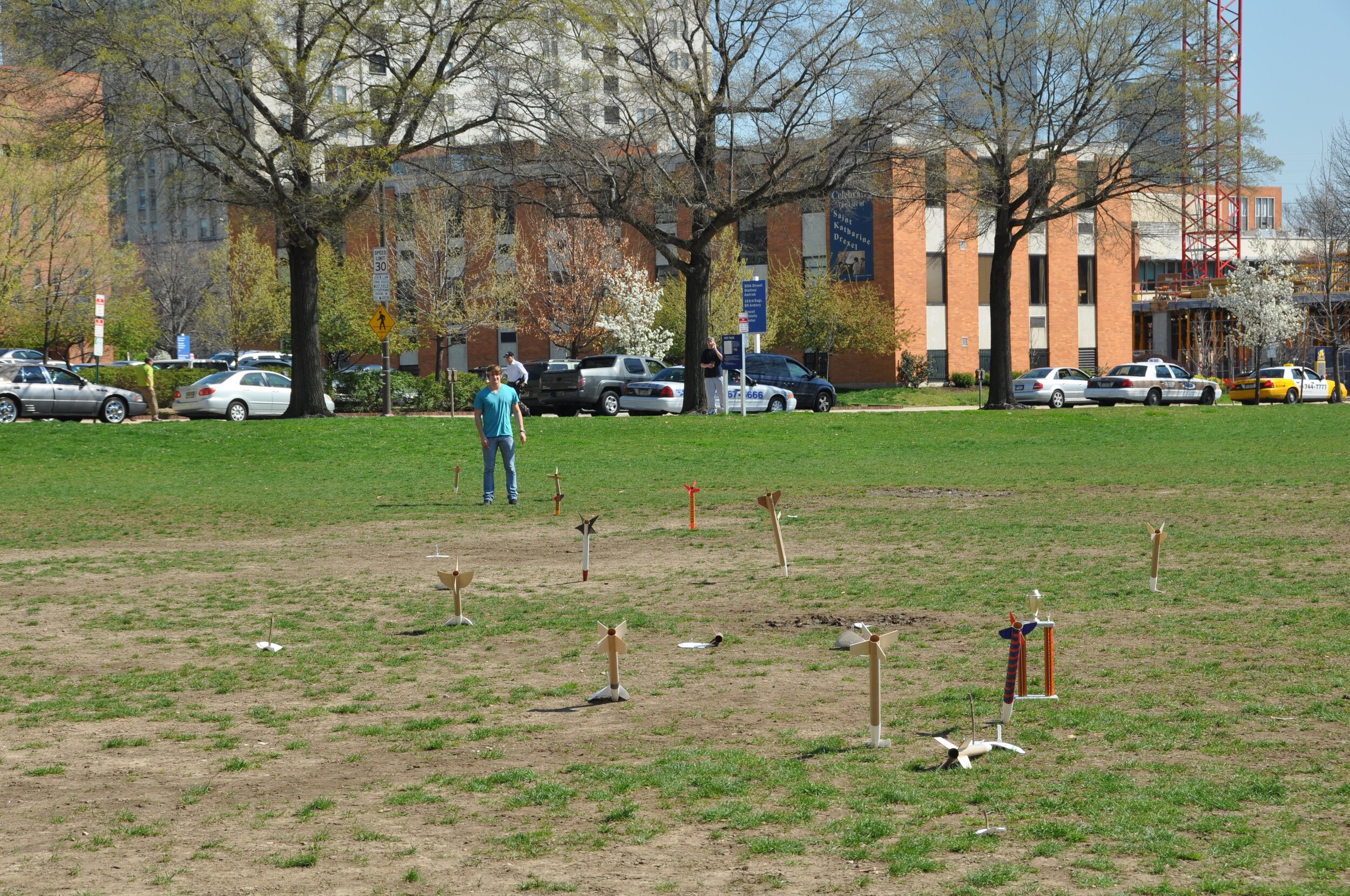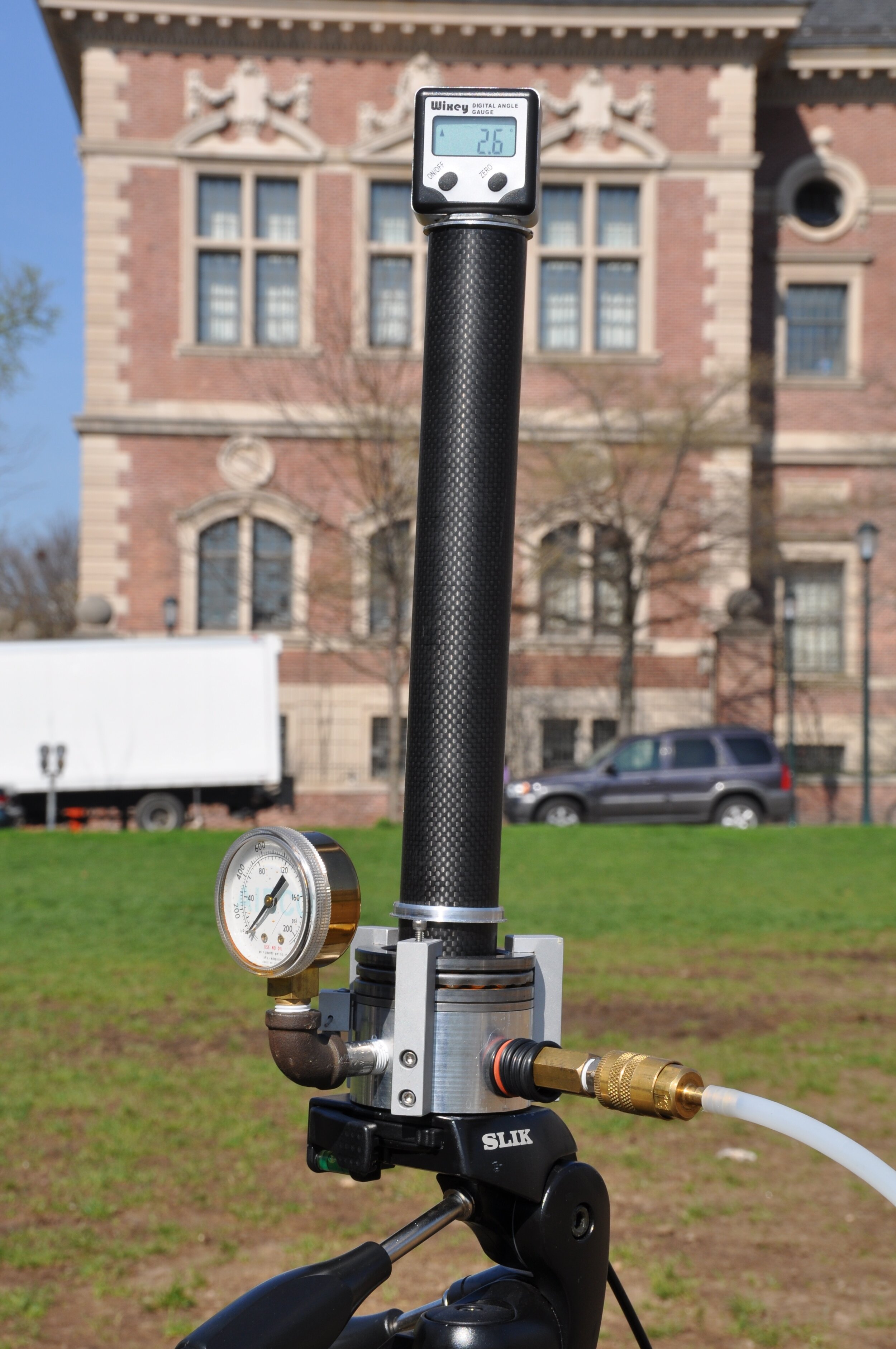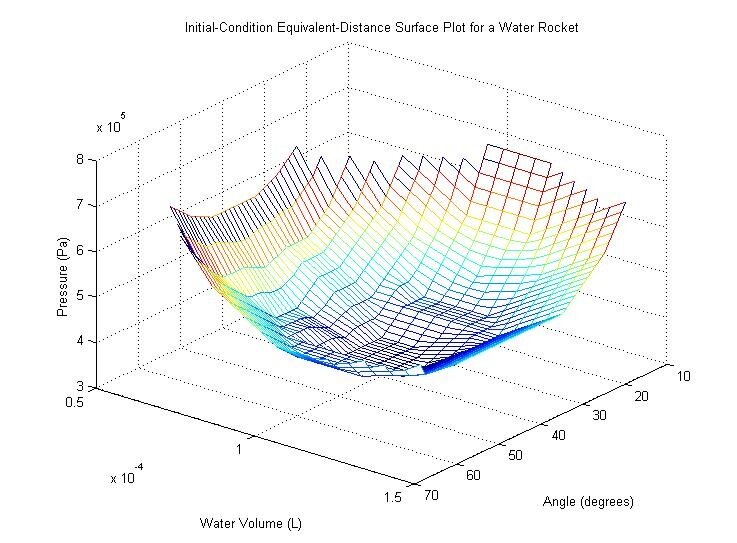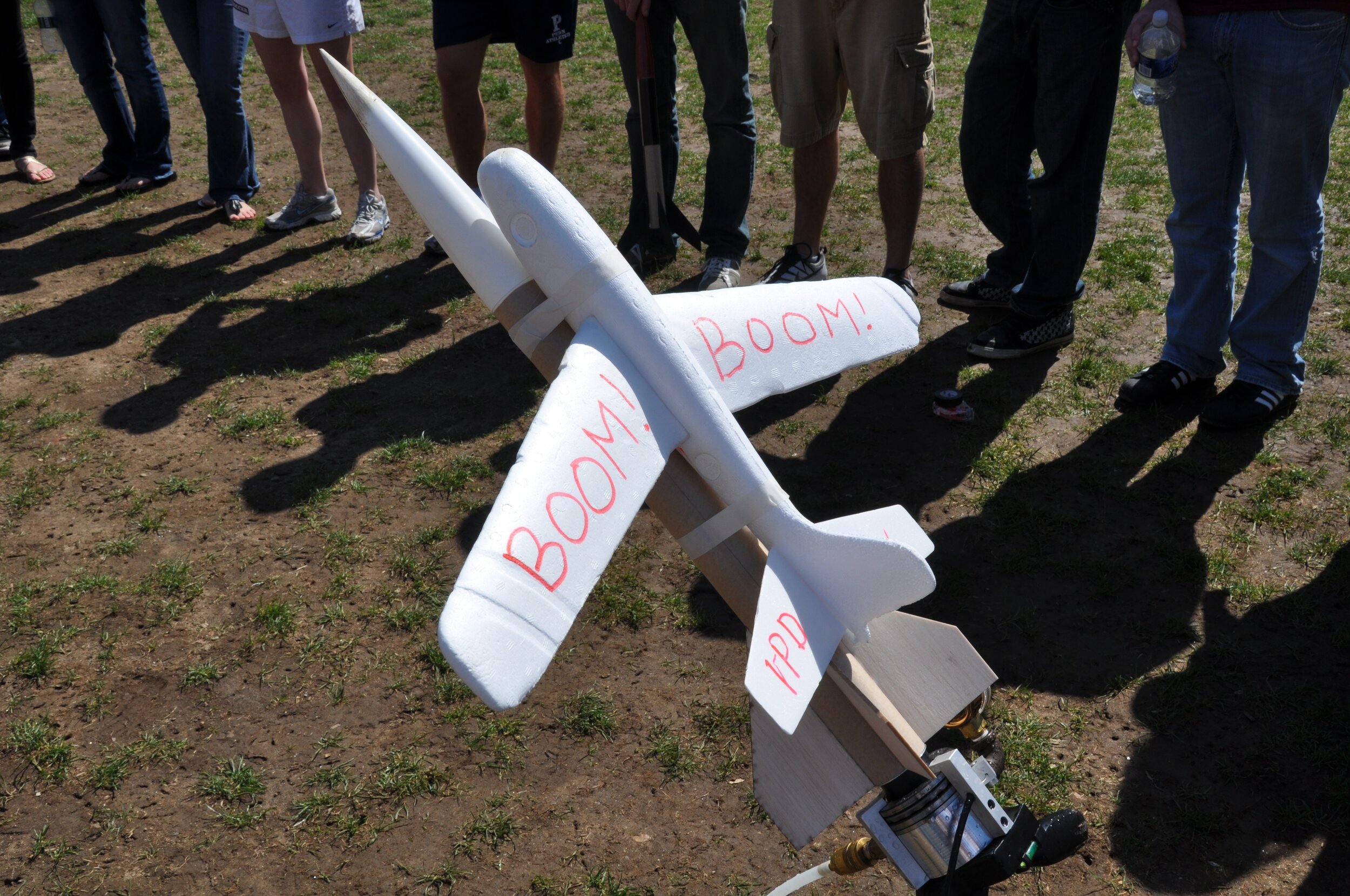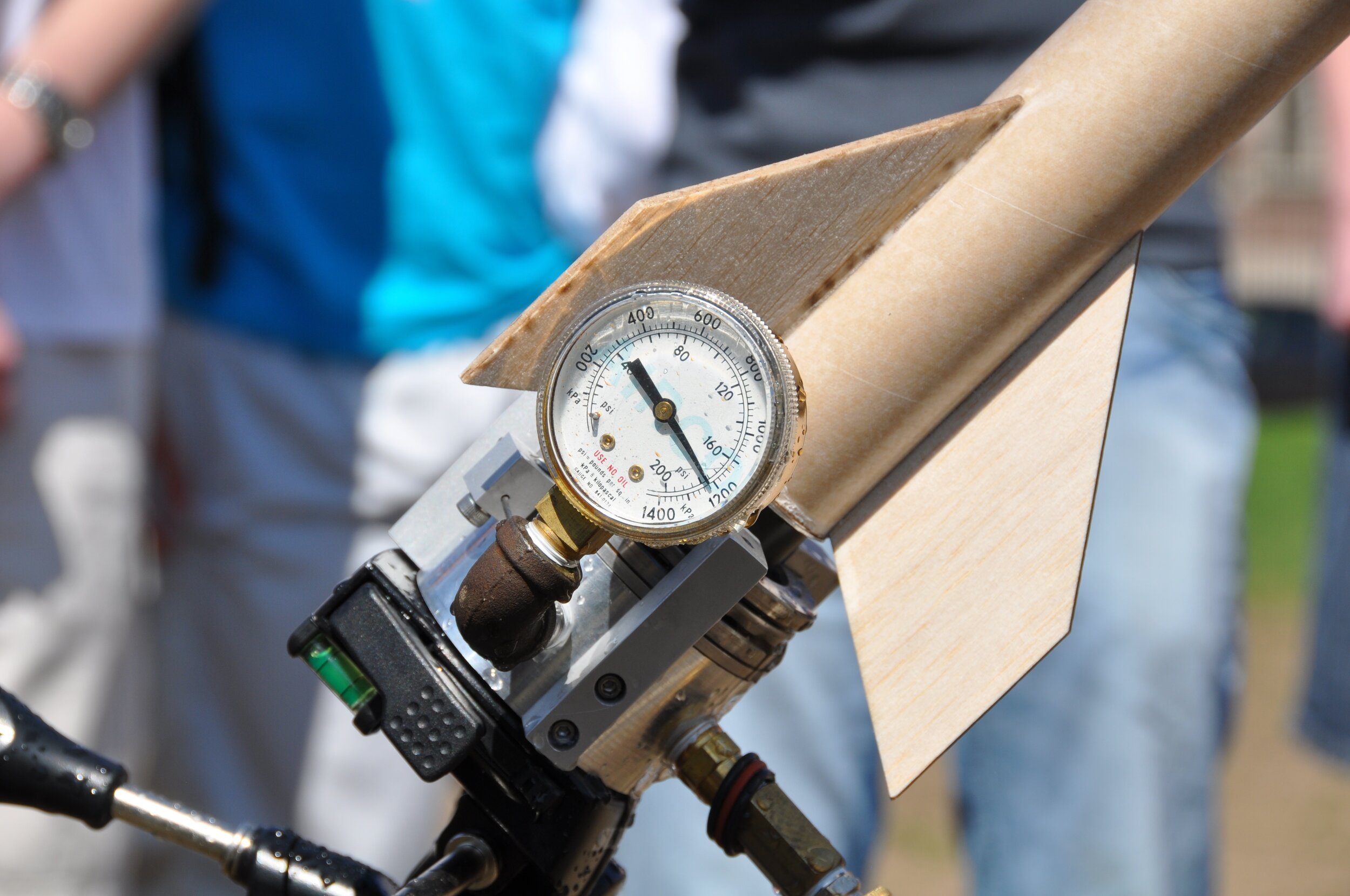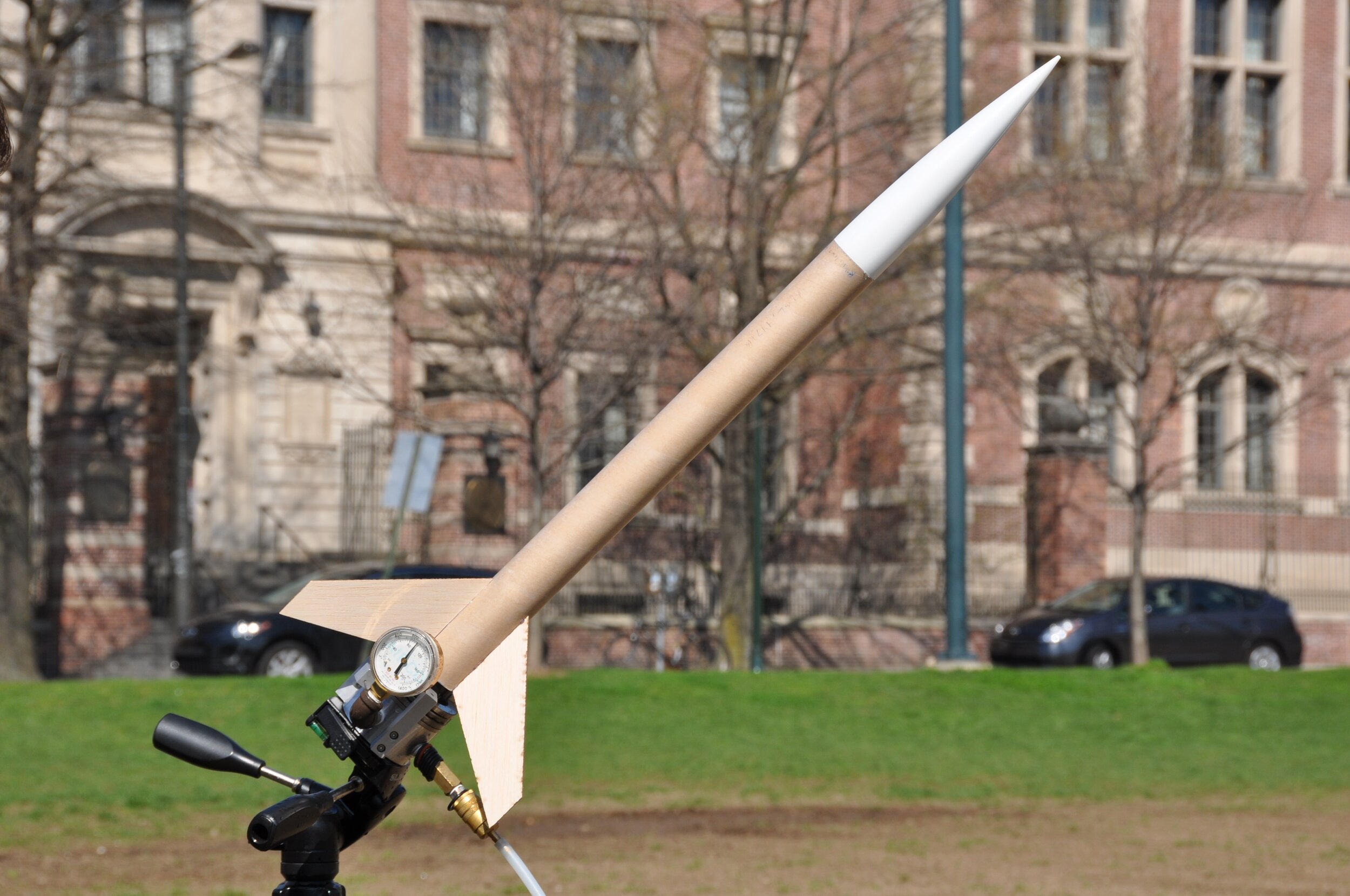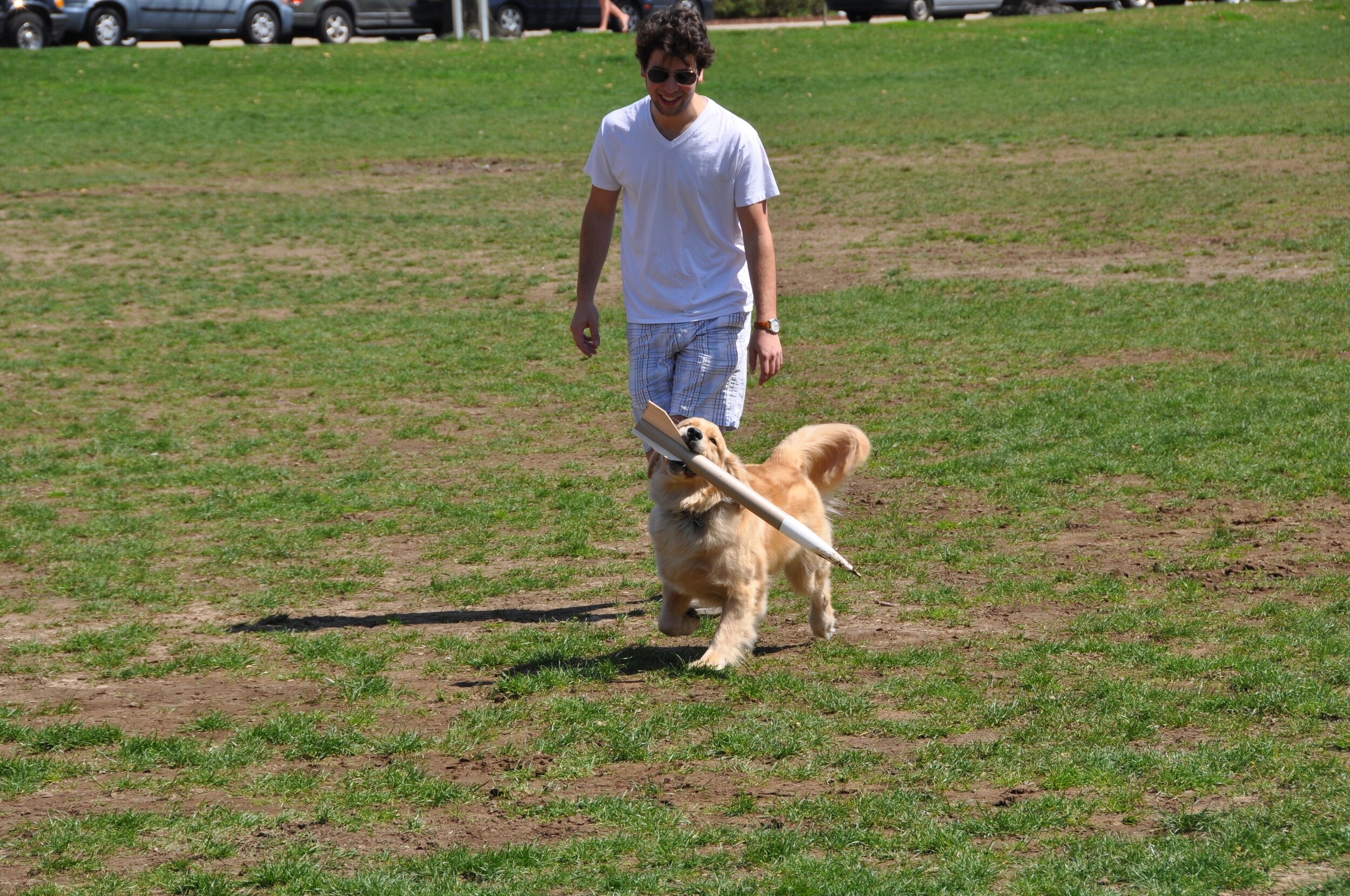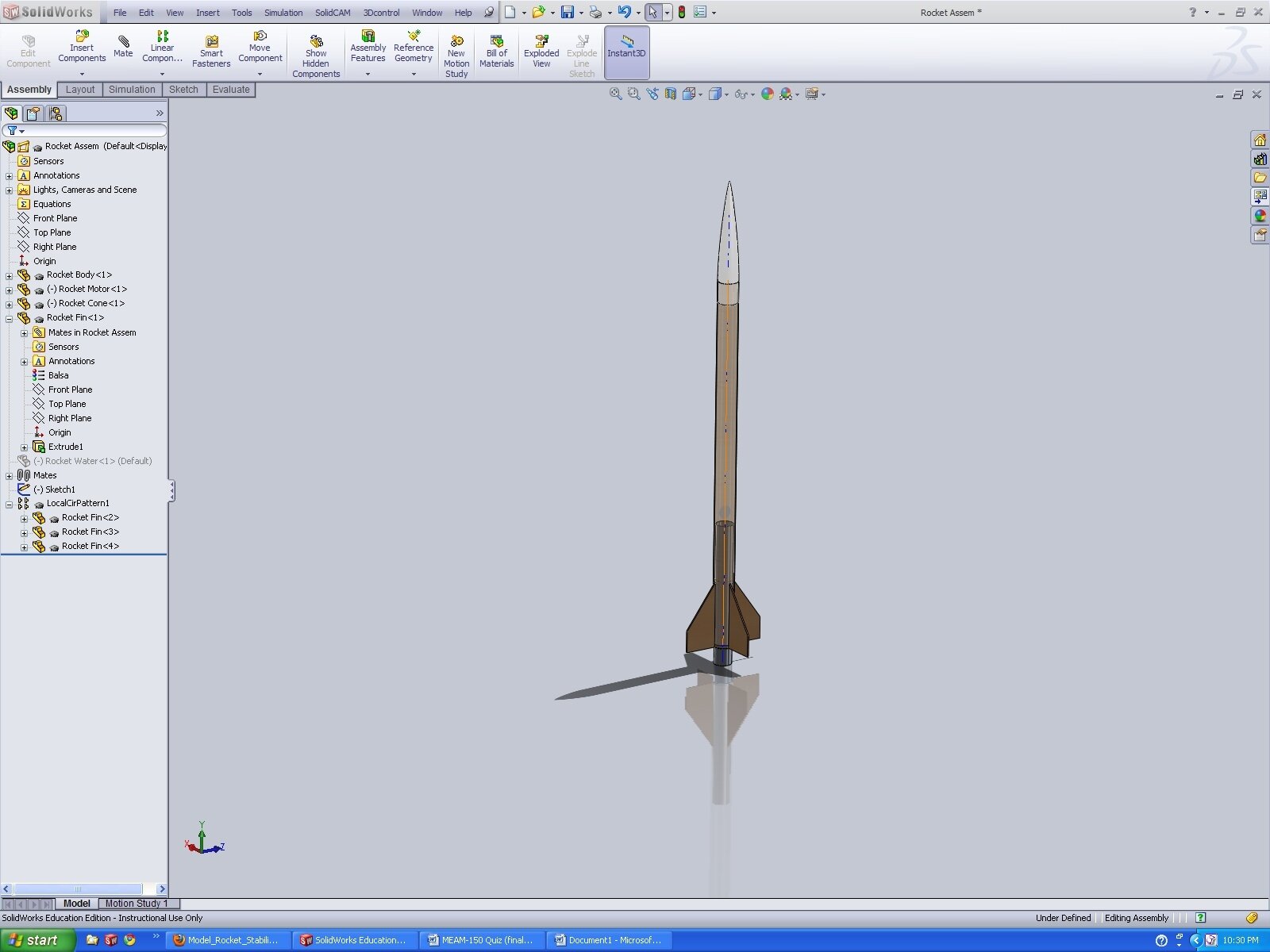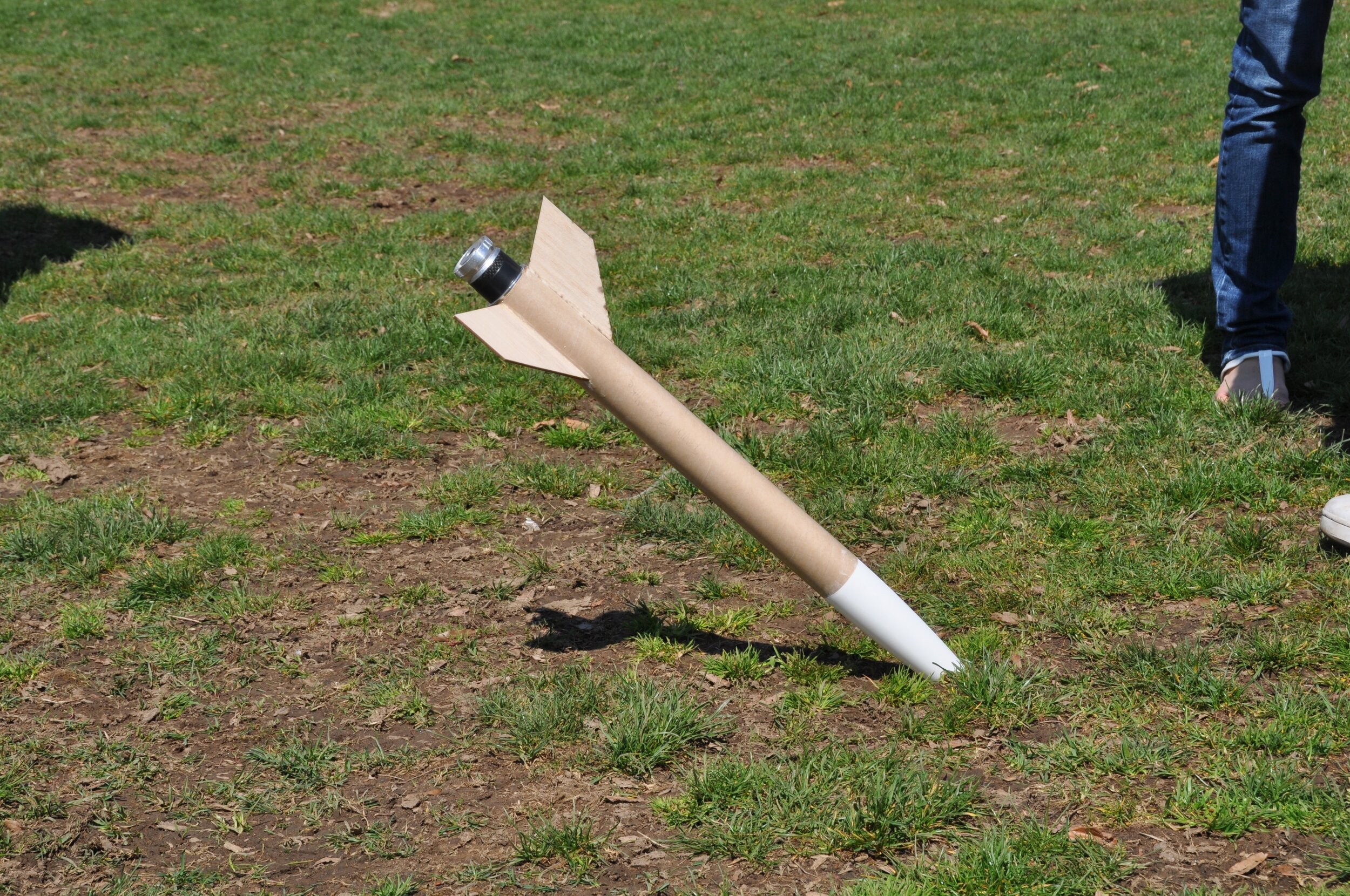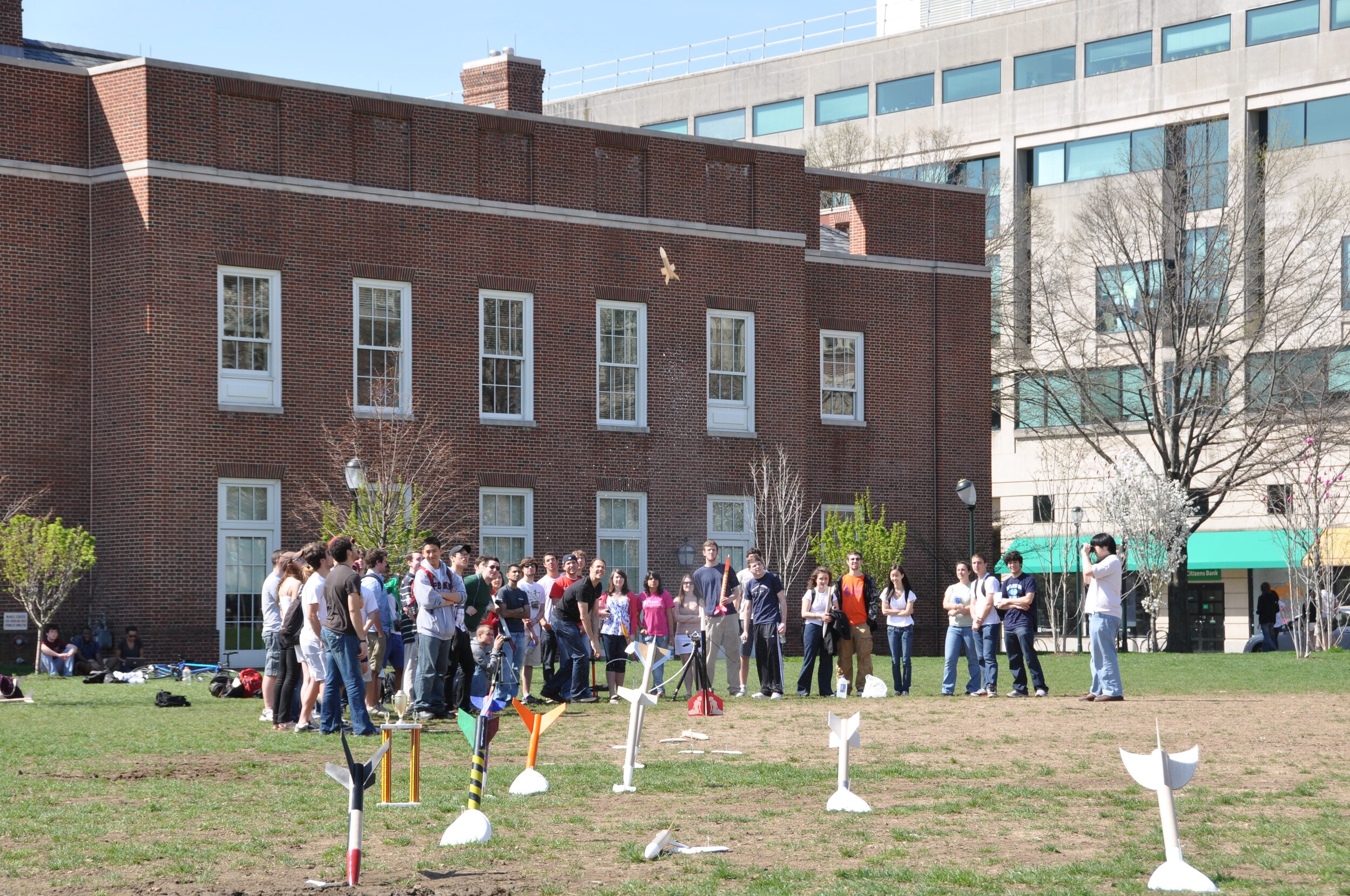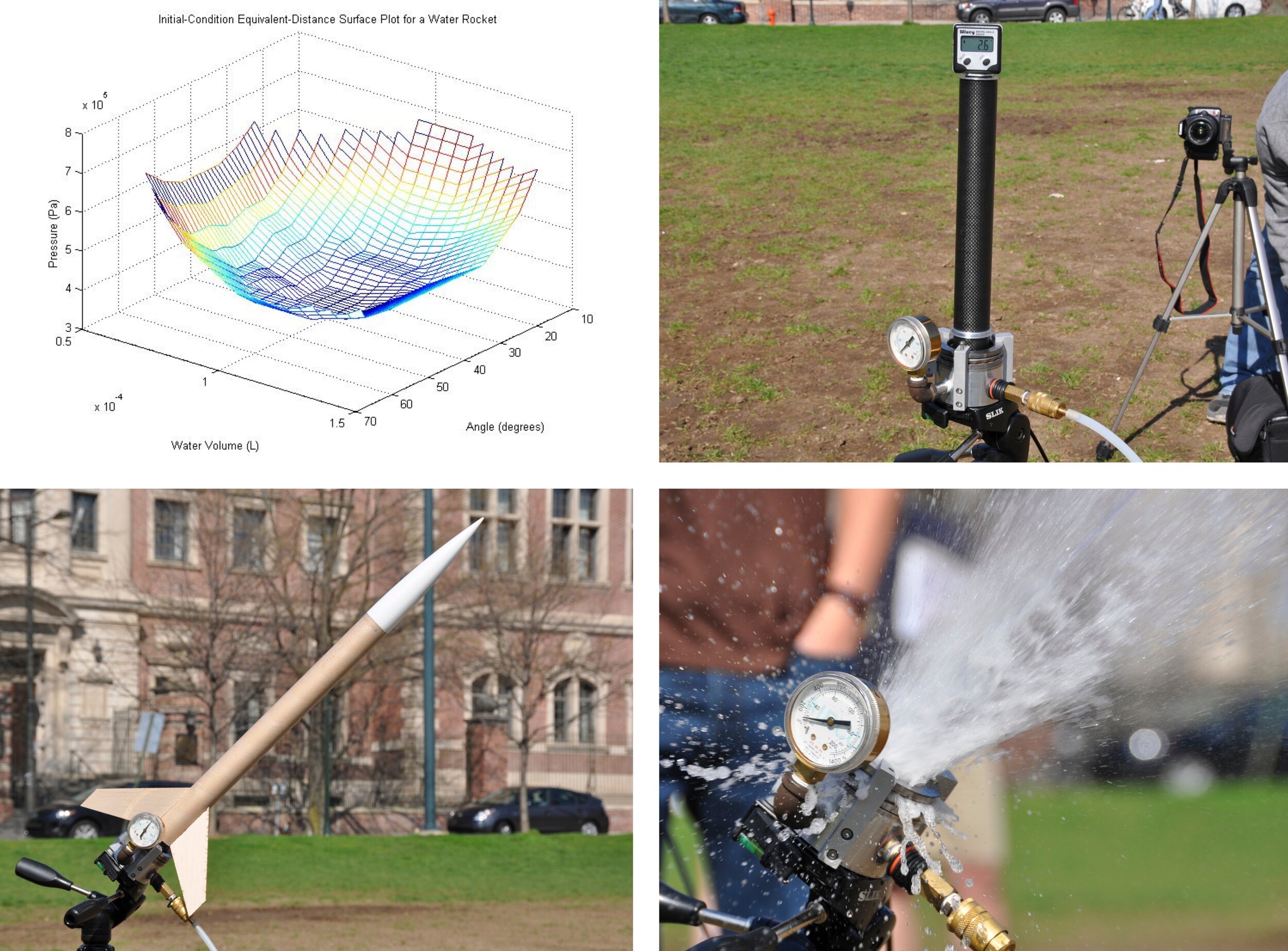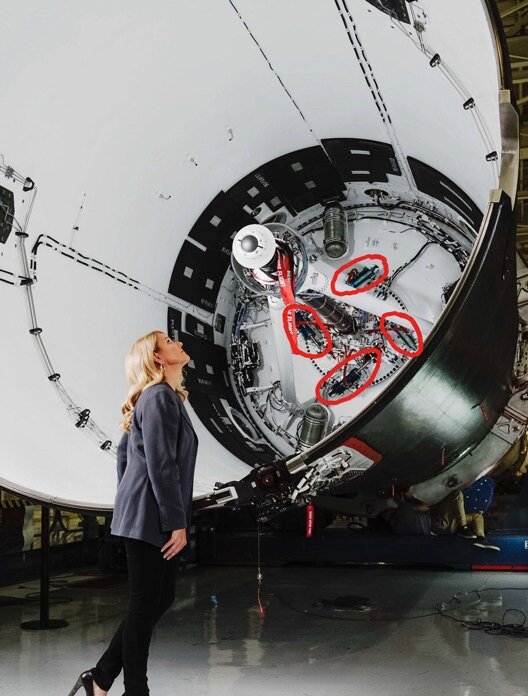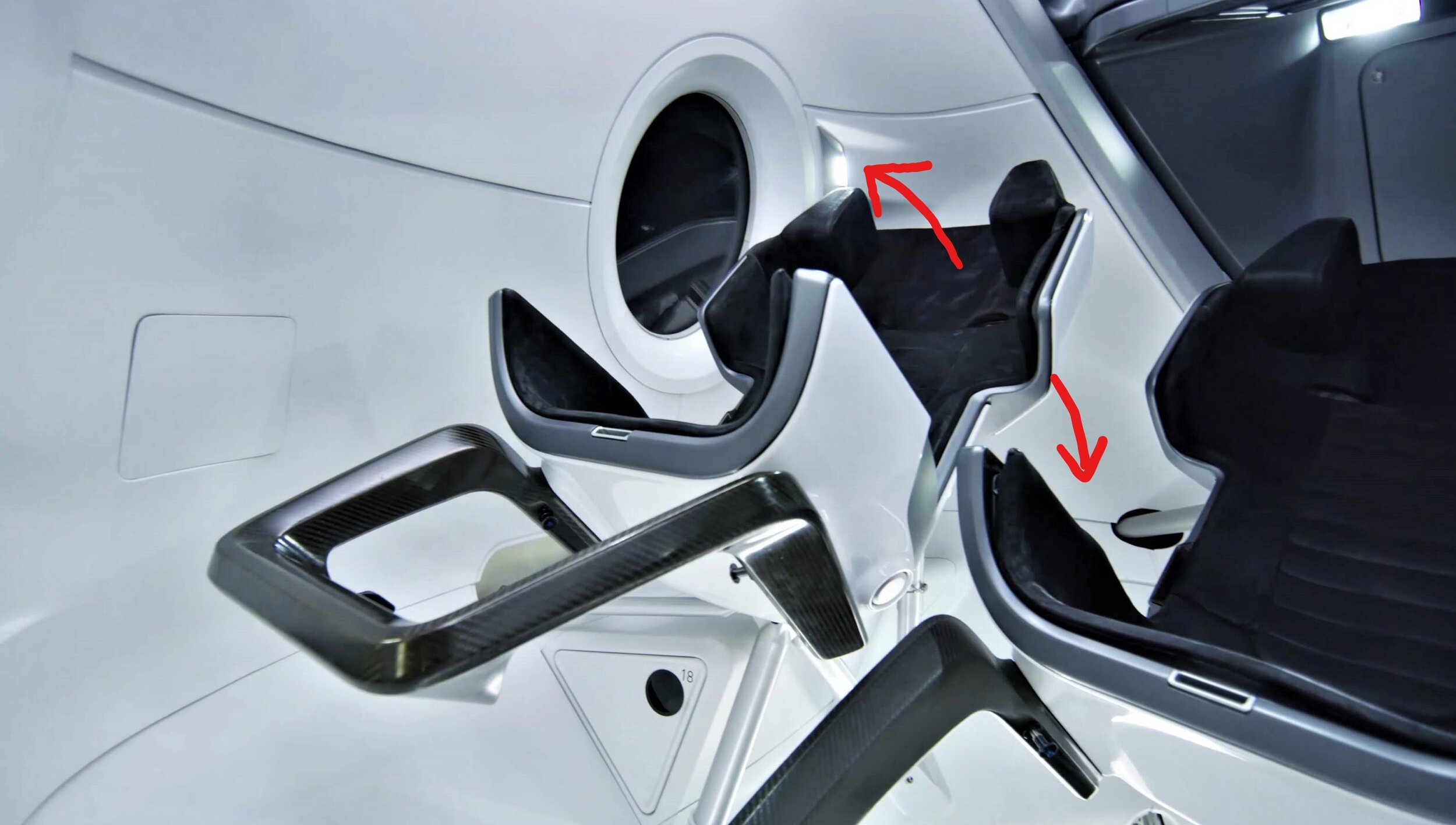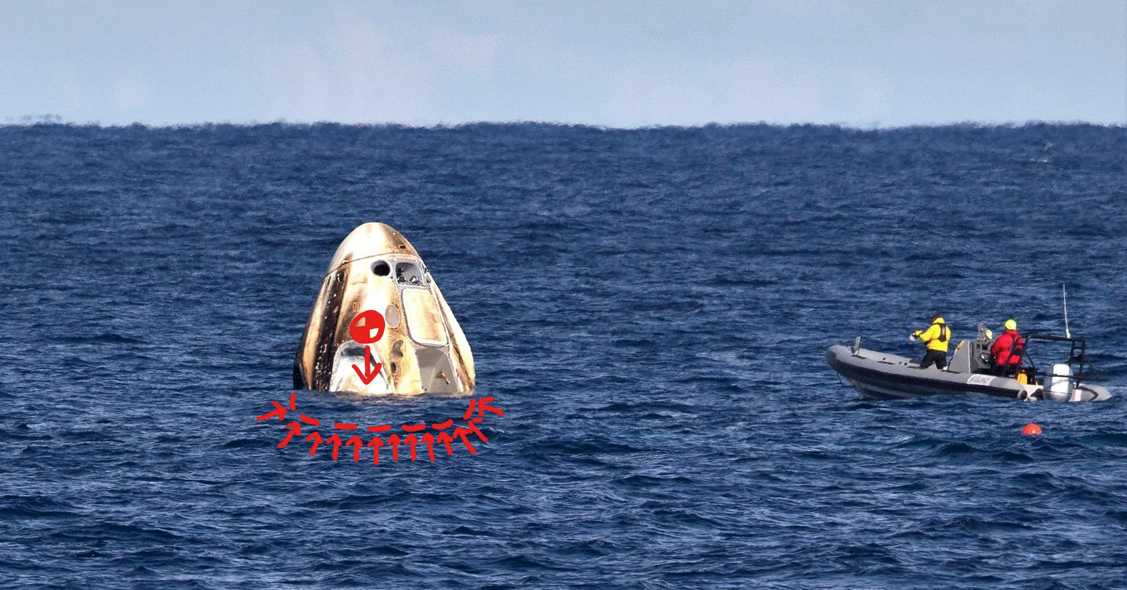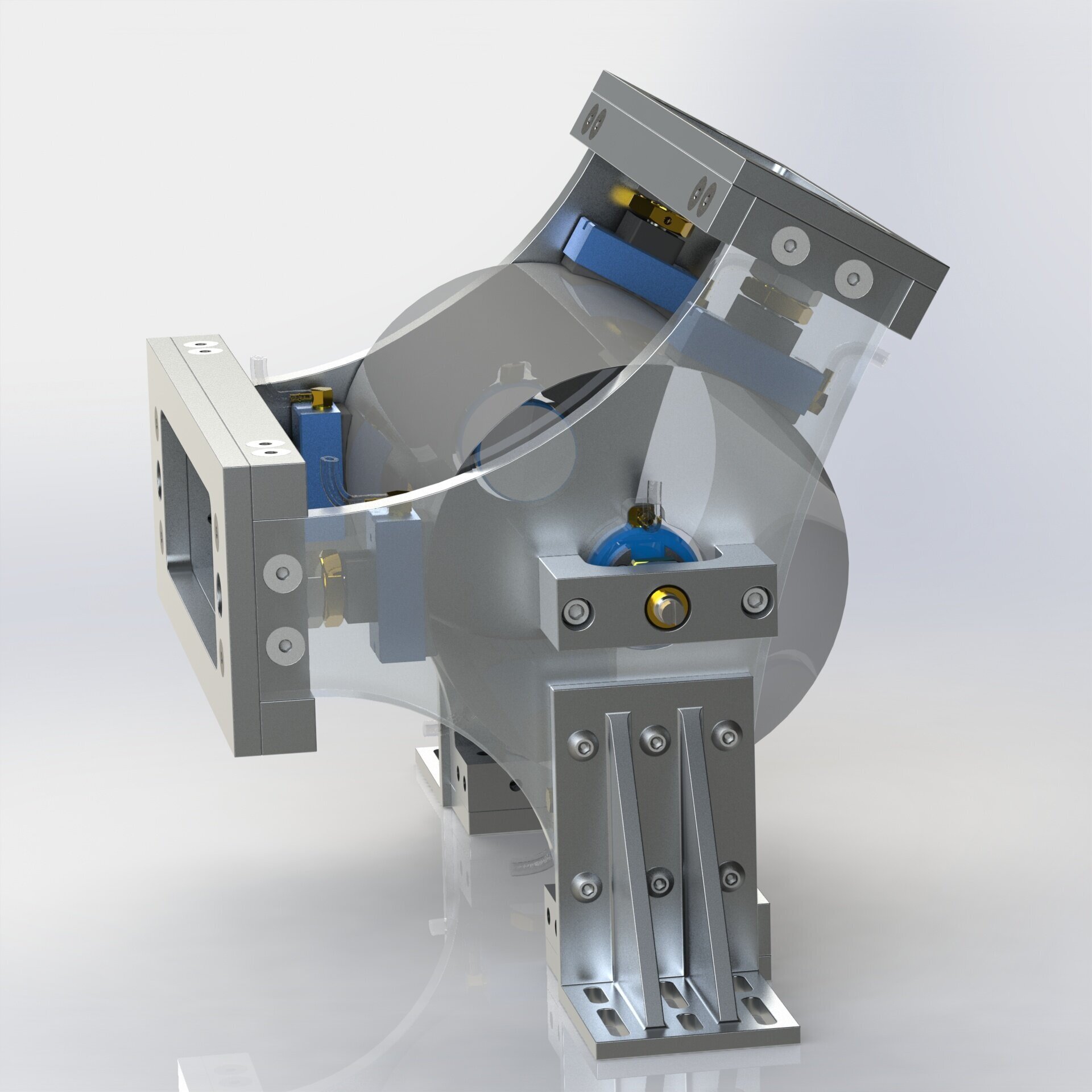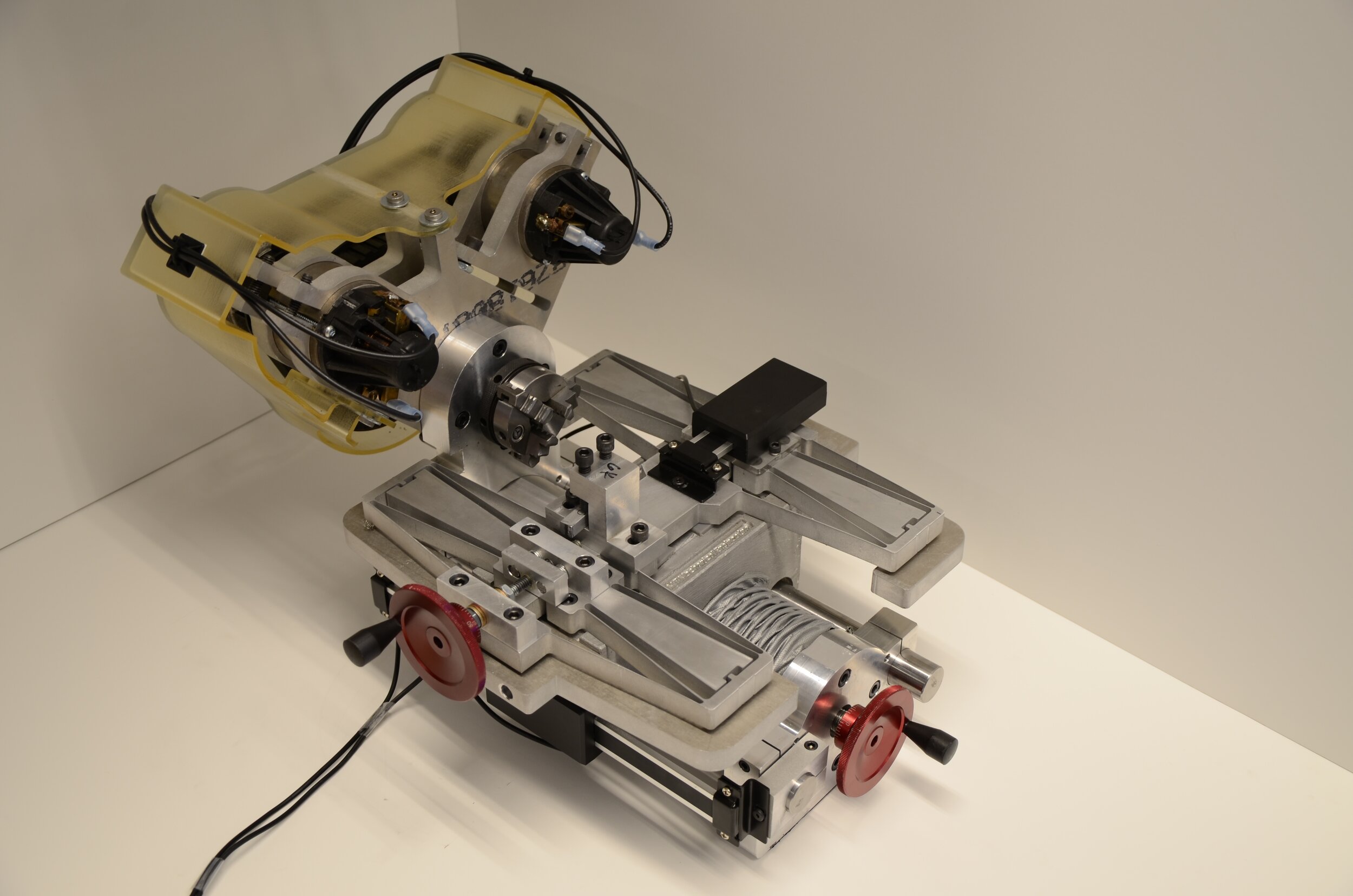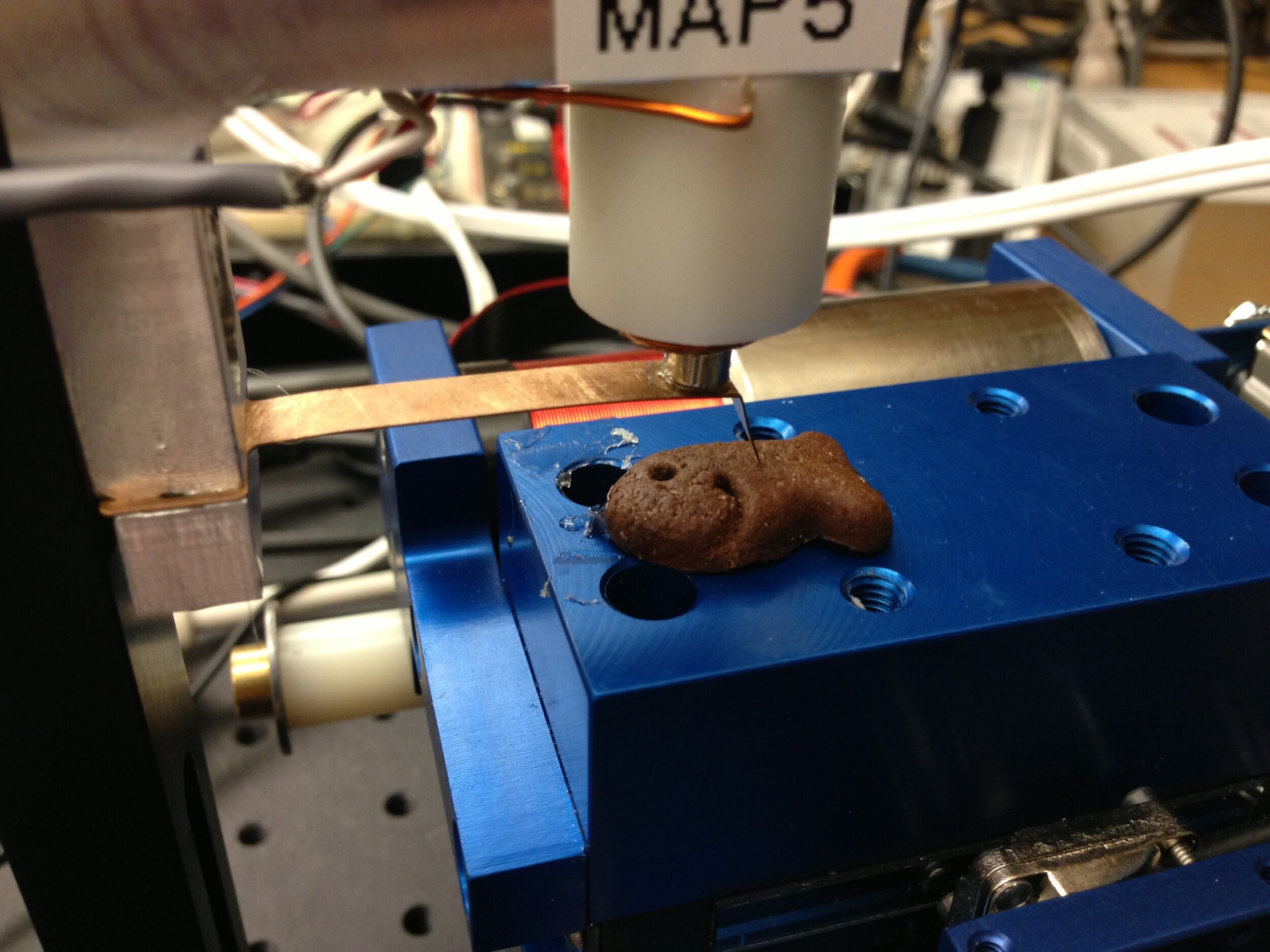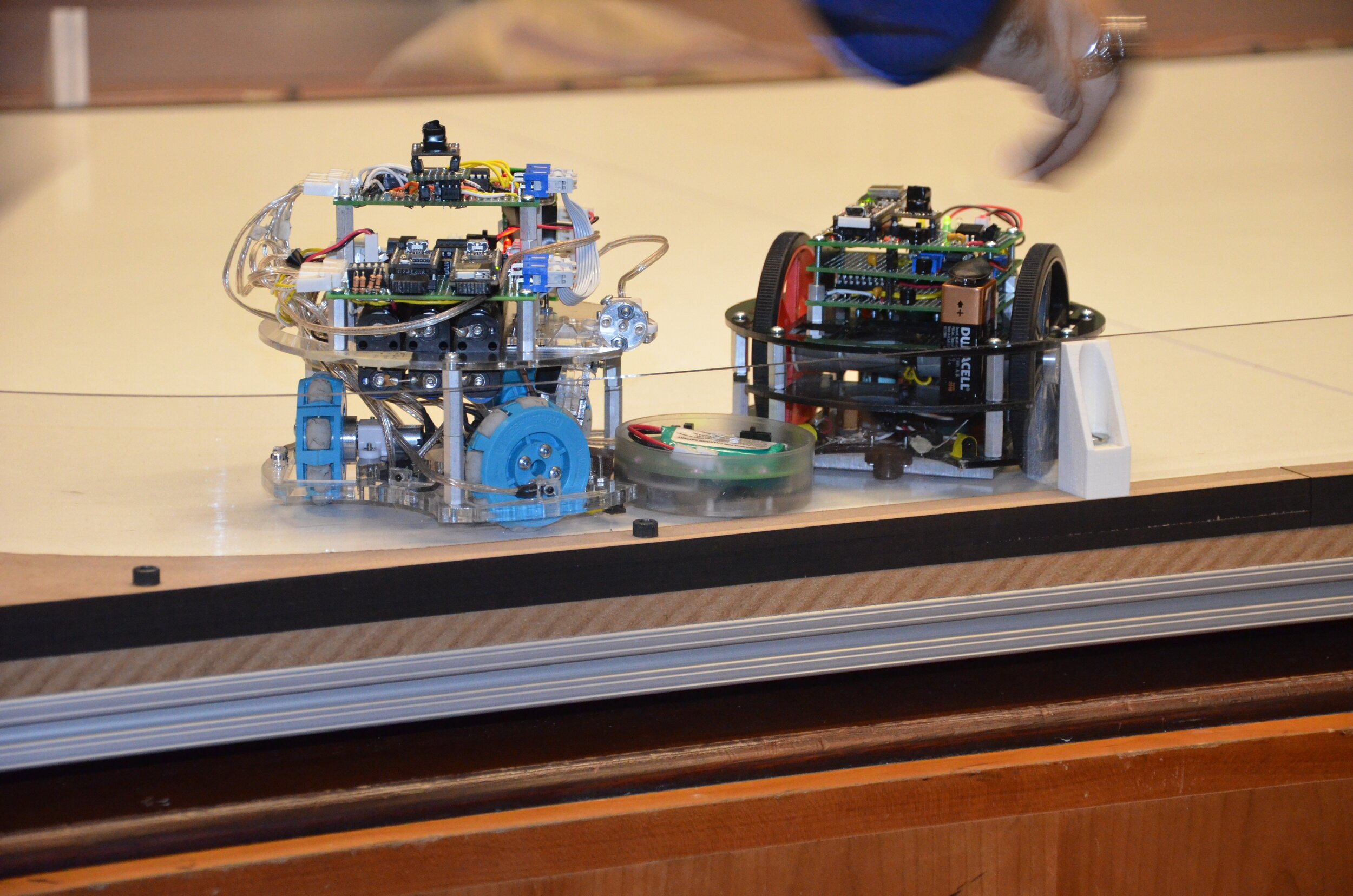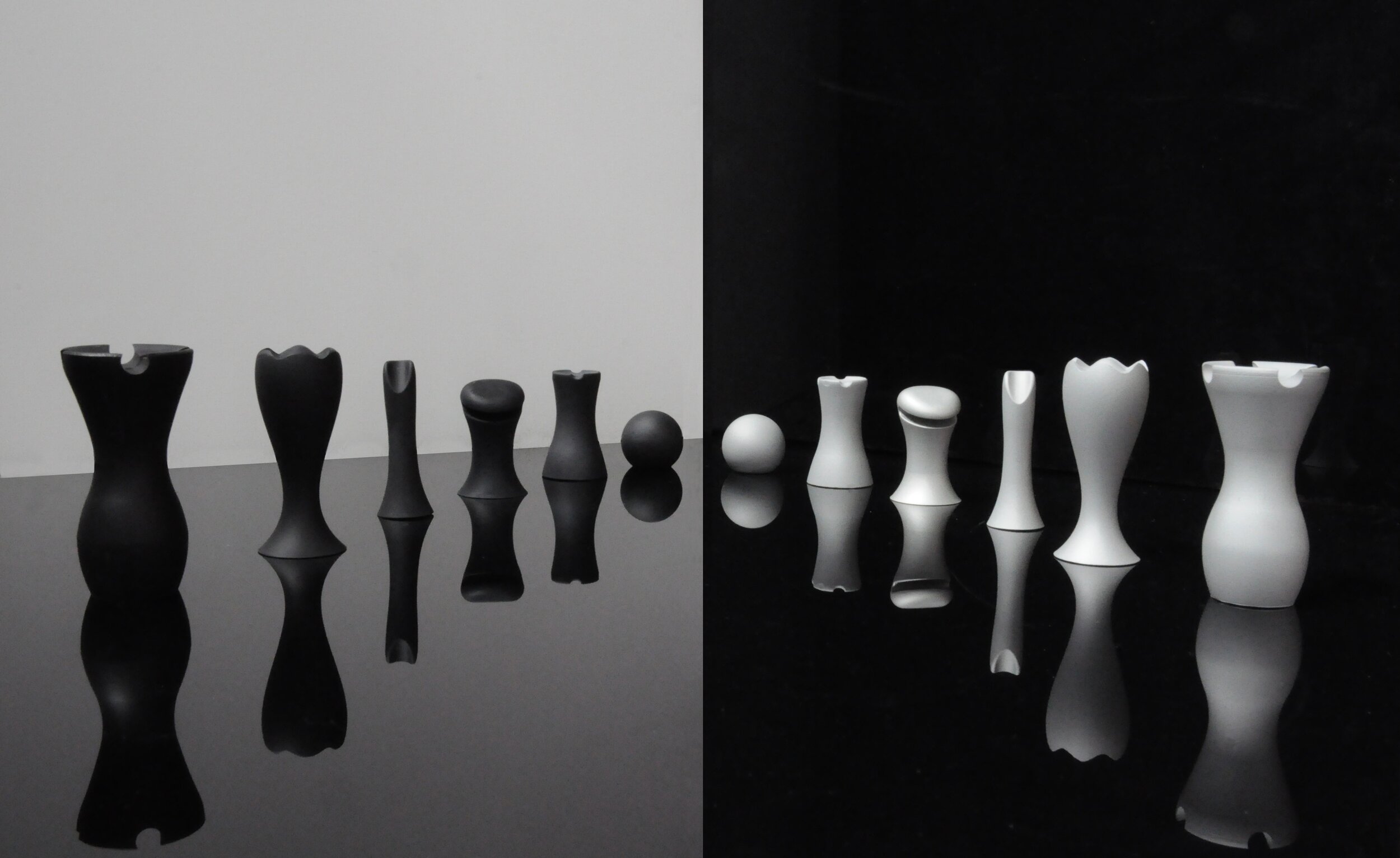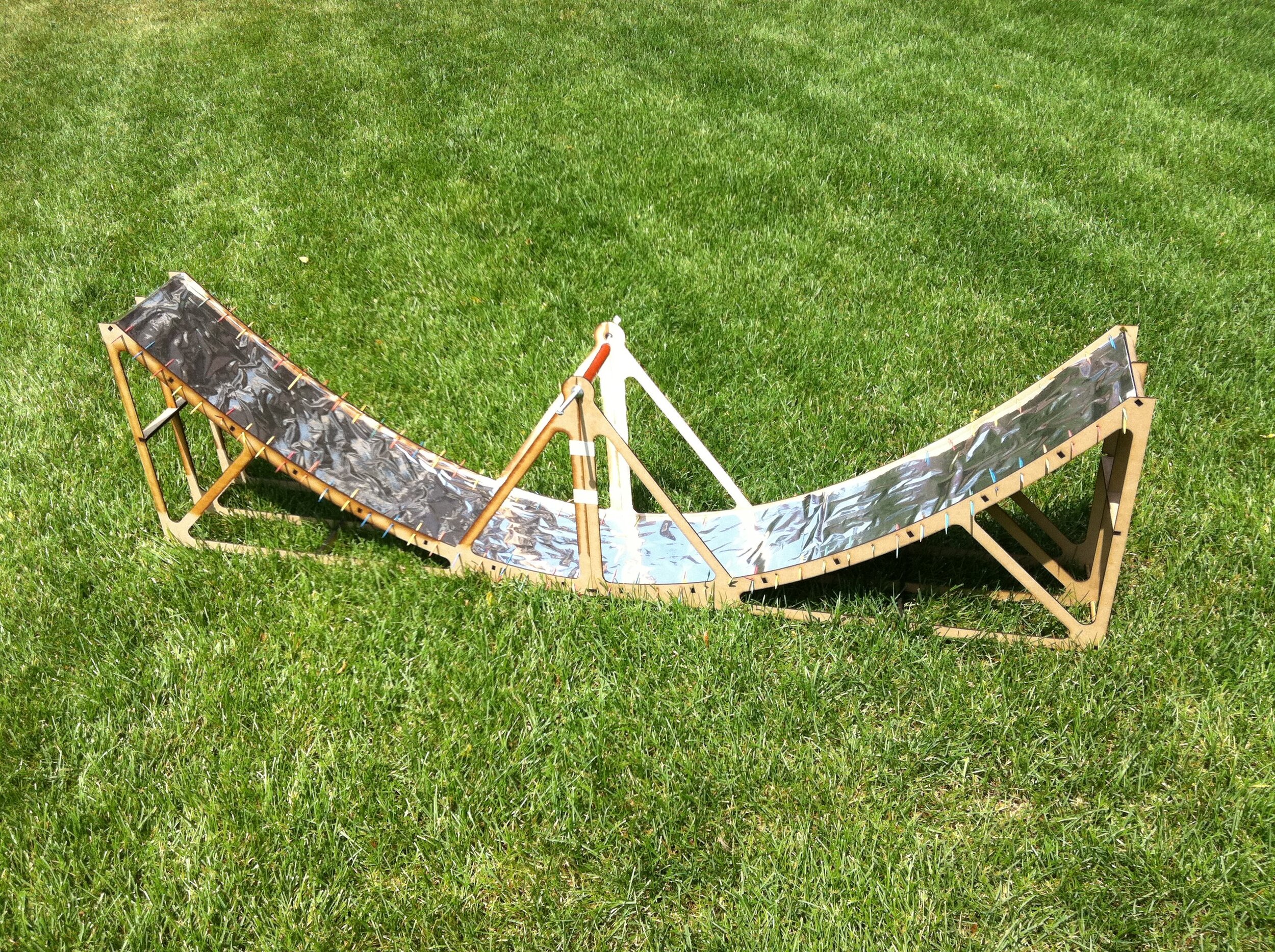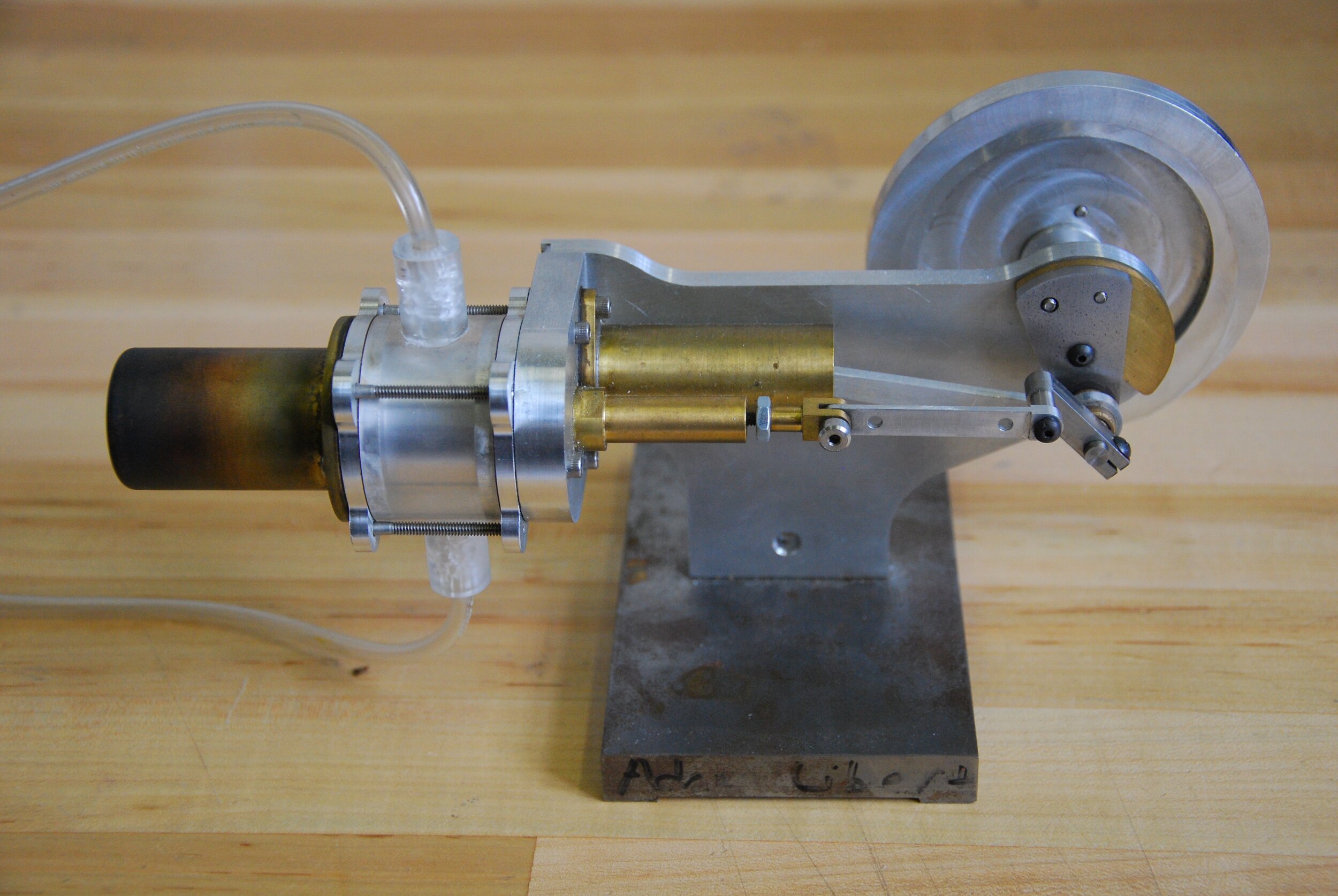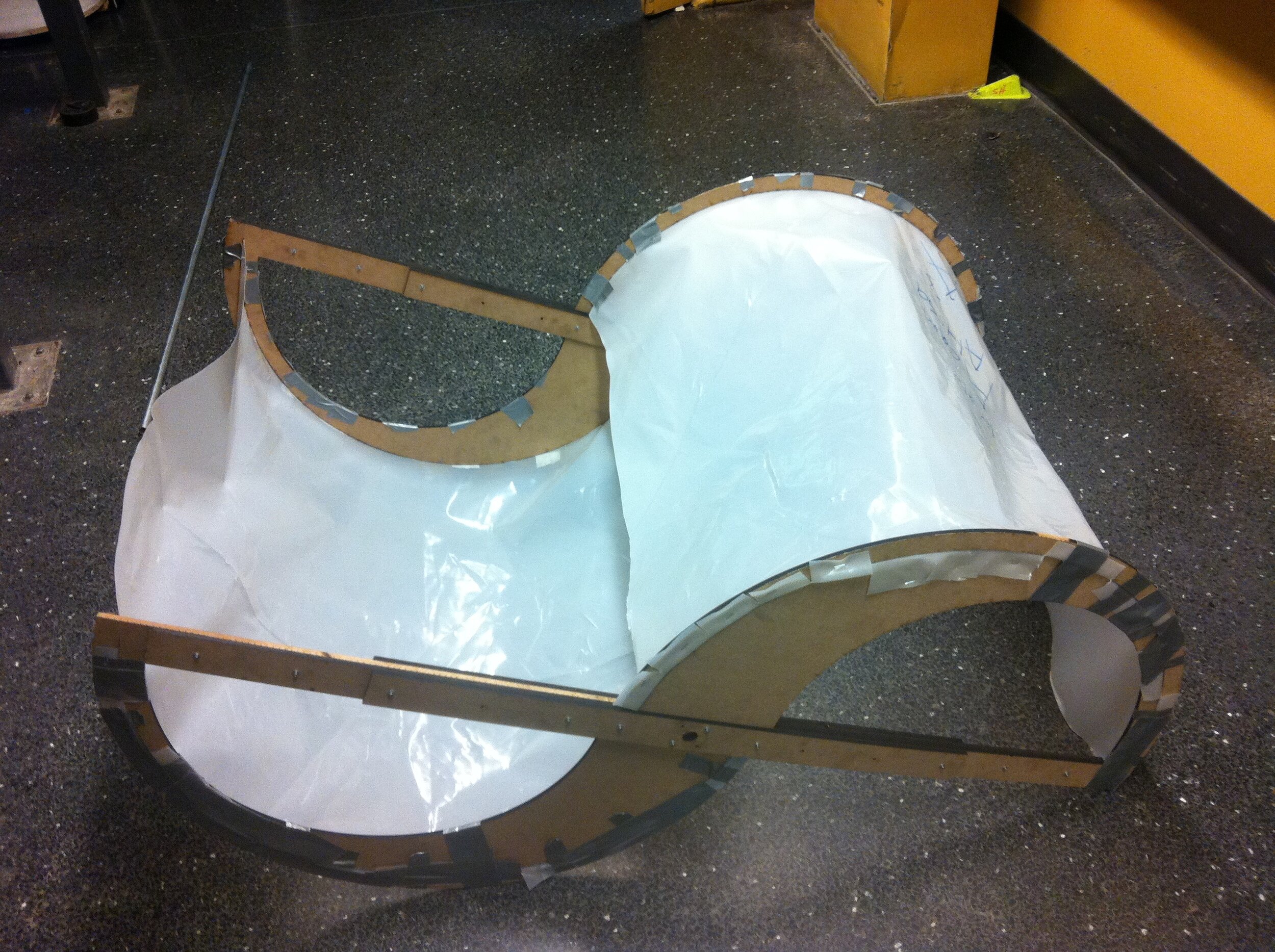water rocket
Engineering Lab – University of Pennsylvania (2010)
Objective:
For this lab, we had to design a rocket body for a custom-made water-rocket engine, and we had to compute the initial launch conditions such that the rocket would hit a target located on the ground a specified distance away.
Project Details:
I led a team of three in the design and construction of a simple body for the high-pressure carbon-fiber rocket engine. The launch variables we had control over were the amount of water in the engine, the pressure of the air in the engine, and the initial launch angle. However, the distance of the target was not given until the morning of the launch, and we were not allowed to test our rockets beforehand, meaning that I had to use MATLAB to create a full model of the rocket’s dynamics, thrust curve, and flight path for any given launch variables. I noticed that, for any given target distance, there were a plurality of different launch parameters that worked. In order to determine which set of parameters was best, I used response surface methodology to find the specific launch conditions that would give us the least variation for any given target distance. This meant that, on the launch day, all we had to do was input a given target distance, and my script would quickly output the optimal launch angle, water volume, and air pressure.
Results
On launch day, we were given a target distance of 62 feet and our rocket landed less then 6 feet away from it, meaning that my rocket model was accurate to within 10%!

